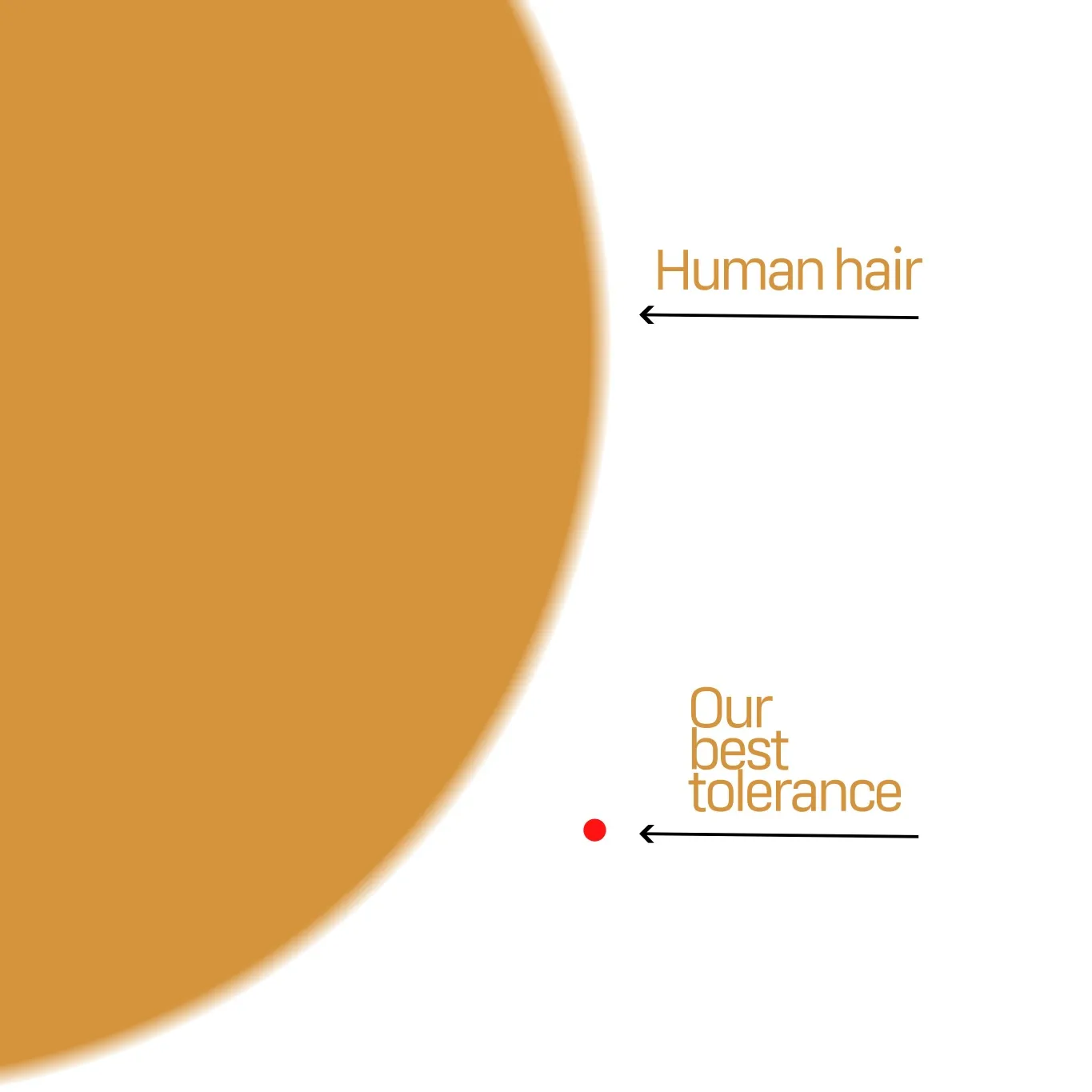🧩 How Close is Too Close?
When you hold a precision-machined part up to the light, it might look flawless — but perfection always has a number. For most parts, that number is something like ±0.05 mm. For tight-fitting aerospace assemblies, maybe ±0.005 mm. But what if you need to push past that? Just how tight can machining tolerances really get today?
⚙️ What ‘Tight’ Really Means
In everyday CNC work, holding ±0.05 mm (50 microns) is routine. High-end shops regularly deliver ±0.01 mm (10 microns) for fine features. But when parts need to fit together with almost no perceptible gap — think satellite optics or semiconductor equipment — tolerances can dip below ±1 micron (0.001 mm).
To put that in perspective:
- A human hair is about 70 microns thick.
- Red blood cells are about 8 microns wide.
- Some ultra-precision parts are machined to within a fraction of a micron — literally the scale of bacteria.
🔬 How Do We Even Get There?
Holding tolerances this tight means standard CNC alone isn’t enough. Shops combine multiple technologies and obsessive process control to push closer to perfection:
✅ Ultra-Precision CNC Lathes & Diamond Turning
Machines with air bearings and granite beds can dampen vibration so well they achieve sub-micron cuts. Diamond-tipped tools shape metals, optics, or crystals with a mirror finish.
✅ Wire EDM & Jig Grinding
Wire EDM can slice through hardened steel with micron-level accuracy, especially useful for intricate dies and molds. Jig grinding and honing refine bores and faces to the tightest tolerances.
✅ Lapping & Polishing
Even if you machine to a micron, you might need lapping or polishing to perfect the flatness or finish. Optical flats, gauge blocks, and high-end mirrors are polished to nanometer flatness.
✅ Metrology: If You Can’t Measure It, You Don’t Have It
None of this works without serious measurement tools: air gauges, coordinate measuring machines (CMMs), interferometers, and even atomic force microscopes, depending on the scale.
✈️ Real-World Parts That Demand This
Why bother? A few industries absolutely need tolerances at the bleeding edge:
- Satellites & Space Telescopes: Mirrors and optical mounts must survive launch yet align perfectly in orbit.
- Semiconductor Fabrication: Lithography equipment positions wafers with nanometer precision.
- Gyroscopes & Bearings: In aerospace, even tiny errors can cause drift or vibration.
- Scientific Instruments: Particle accelerators, laser systems, and metrology labs often machine parts down to single-digit nanometers — with post-processing.
⚡ But Physics Always Wins
Even with the best machines, there’s a physical wall:
- Materials expand and contract with temperature.
- Vibration from a truck passing outside can ruin a cut.
- The heat from cutting itself can distort the part.
Ultra-precision shops control room temperature to fractions of a degree and isolate equipment on granite slabs. Even the machinist’s body heat can matter.
💡 When Tight Tolerances Hurt
Here’s the catch: tighter tolerances cost time and money — exponentially. Chasing an extra 10 microns could double or triple your cost if you don’t really need it. Smart engineers know the tightest tolerance is the one that gets the job done, not the tightest the shop can hold.
✅ Key Takeaway
The tightest tolerances possible in modern machining can reach the nanometer range — but practical tolerances for real parts usually stop at the sub-micron level. Beyond that, we polish, lap, or ion-beam our way to perfection.
If you ever wonder if your design really needs that ±0.001 mm callout, it might be worth asking: is it a rocket, a microscope, or just a bracket? Sometimes perfection is just good engineering judgment.
✏️ Have a tight-tolerance project in mind? Let’s talk machining, design, or a quick DFM check.
